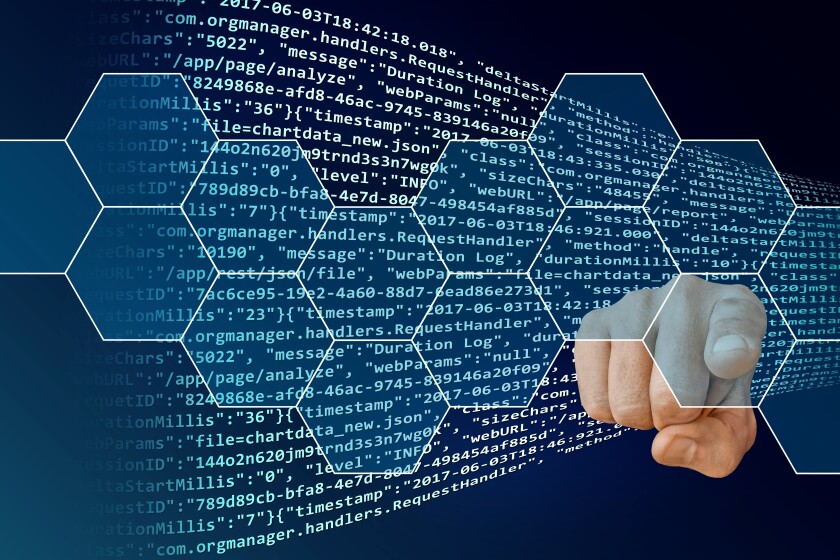The latest edition of the Guidelines for Patent Examination in China came into effect on January 20 2024. To facilitate the protection of new fields, such as big data and AI, and other innovative technical achievements, the guidelines make major adjustments to the rules concerning invention patent applications involving computer programs in Part II, Chapter 9.
The title of the subject matter of a computer program claim has been addressed (and the guidance is now in line with the examination standards of Europe, the US, and other regions), the standard/criterion of examination on the subject matter related to AI and big data objects are specified, and the standard/criterion of examination on inventiveness for technologies such as AI and big data is further refined. The modifications are designed to better serve innovative entities, standardise examination procedures, and help to elevate the level of intellectual property rights protection.
This article offers a detailed interpretation and analysis of the revisions to provide guidance for technical exploration in relevant fields, drafting application documents, and responding to office action.
1 The title of the subject matter of claims
With regard to the title of the subject matter of claims on computer program, the latest edition of the Guidelines for Patent Examination adds the title of "a computer program product". To sum up, the title of the subject matter of claims that can currently be made can be as follows:
A method of/for…;
An apparatus/system of/for…;
A computer readable storage medium; or
A computer program product.
The revision addresses the need for innovative entities to enhance computer software protection, while also aligning with examination standards in Europe, the US, and other regions. Such modification ensures that patent applications filed in jurisdictions such as Europe and the US will no longer risk the cancellation of claims for computer program products when submitted in China. This promotes consistency in the protection of patent subject matter across different countries.
The revised content also includes a definition of the scope of protection of a computer program product; i.e., the line "the computer program product should be understood as a software product whose solution is mainly achieved by the computer program" is added.
The author believes that the introduction of this line is also for the purpose of facilitating a comparison of objects in infringement cases. That is, a feature comparison will be performed by using a software product as an asserted infringement product. When a software product to be compared can execute a method claim according to a computer program flow, the software product would be considered to be infringing the computer product claim.
2 Standard/criterion of examination subject matter regarding AI and large data
The amendments in this part primarily focus on innovative advancements in AI and big data, and provide further refinements regarding the subject matter of a patent invention. The updated part specifies that the following three situations are considered as subject matter of patent applications for inventions.
2.1 Scenario one
If various steps involving algorithms in the claims are closely related to a technical problem to be solved – for example, data processed by an algorithm is data having an exact technical meaning in the technical field, and the execution of the algorithm can directly reflect a process of solving a certain technical problem by using a natural law, and, finally, the technical effect is obtained – the solution defined in this claim is generally considered to belong to the technical solution as claimed, under Article 2.2 of the Patent Law.
The content mentioned above is modified from an example in the old guidelines of an independent content as the first situation of protecting innovative achievements in AI and big data. The key point of evaluating the subject matter in this first situation lies in determining whether each step of the algorithm is associated with the technical field, and the specific principle on evaluation mainly focuses on two aspects:
Whether each step of the algorithm can reflect an adaptive modification made to the algorithm when applied to the specific field; and
Whether each step of the algorithm can directly embody an execution process when applied to the specific field.
If either aspect is met, the solution defined by the claim is generally considered to belong to the technical solution under Article 2.2 of the Patent Law.
2.2 Scenario two
The solution defined in the claim is a technical solution under Article 2.2 of the Patent Law if:
The solution relates to improvements in AI or big data algorithms such as deep learning, classification, and clustering; and
The algorithm has a specific technical relationship with an internal structure of a computer system, and can solve the technical problem of how to improve hardware operation efficiency or execution effect, comprising a reduction of the amount of data storage, a reduction of the amount of data transmission, an improvement in the processing speed of hardware, etc., so as to obtain the technical effect of improving the internal performance of a computer system complying with the natural law.
The content in this part is newly added to Part II, Chapter 9, which sets forth the second situation for protecting innovative achievements in AI and big data. The key point to evaluate the subject matter based on this situation is to determine whether the algorithm feature and the hardware structure-related feature are mutually adaptive and closely combined in the technical implementation level, The specific basis on the evaluation can refer to the following aspects:
Adaptive improvements made to the algorithm under the constraint of a specific hardware environment; for example, thereby reducing the amount of data storage and data transmission;
Adjustment of the system architecture to support the operation of a specific algorithm; for example, utilising multiple processors for parallelisation to improve hardware processing speed;
Adaptively improving an algorithm to utilise the processing capability of a system, optimising the overall execution effect of the computer system; and
Achieving the technical effect of improving the internal performance of the computer system by optimising the system resource configuration, without changing the hardware structure itself.
2.3 Scenario three
The solution defined in the claim belongs to the technical solution as claimed under Article 2.2 of the Patent Law if it:
Processes big data in a specific application field;
Obtains an inner association relationship that conforms to a natural law in the data by using classification, clustering, regression analysis, neural networks, and the like; and
The technical problem of how to improve the reliability or accuracy of big data analysis in specific application fields is solved and the corresponding technical effect can be obtained.
The content of this part is newly added to Part II, Chapter 9, which is the third situation for protecting innovative achievements in AI and big data. It is important to consider all the features specified in the claims as a whole when determining the subject matter in this situation and determining whether the internal and relevant relationships between data comply with the laws of nature.
With regard to the third situation, the overall determination is considered crucial. In some fields, obtaining a prediction result through big data processing – such as classification, clustering, regression analysis, and neural networks – may not constitute a technical means. Additionally, processing objective data may not always comply with the laws of nature. For example, using big data processing to predict stock prices trends relies on economic laws rather than natural laws, and thus may not be eligible for patent protection.
The adjustments in the revised guidelines regarding subject matter offer a specific standard of examination on computer program-related subject matter from various perspectives and angles. Additionally, they provide clear guidance for innovation entities, patent agents, and examiners on how to approach this type of subject matter.
3 The inventive step criteria
3.1 Standard/criterion of examination on inventiveness for improving a computer system’s internal performance
If an algorithm recited in a claim is specifically designed to be associated with the internal structure of a computer system, and enhance the improvement of the internal performance of the computer system and the calculation efficiency or execution effect of hardware, comprising a reduction in the amount of data storage and data transmission or an improvement in the hardware processing speed, etc., the algorithm feature and the technical feature can be considered to functionally interact and complement each other. When making an inventive step examination, the contributions of the algorithm features to the technical solutions should be considered.
The introduction of this content is intended to complement and work in concert with the previous discussion on the evaluation of subject matter. It is important to consider the combination of algorithm features and hardware technical features during an examination procedure. In some cases, the examiner may determine that the technical solution of the claim is eligible for patent protection but raise concerns that it only pertains to algorithm improvement rather than hardware improvement, thereby lacking inventiveness.
This modification aims to clarify that the contribution of the algorithm feature to the technical solution should be taken into account when assessing inventiveness, thereby enhancing the protection of an algorithmic innovation. The modification also provides a clear framework for examination. By considering the overall impact of the algorithm features and focusing on whether their addition improves the internal performance of the computer system, the contribution of the algorithm feature can be evaluated accordingly.
3.2 Inventive step examination criteria for improving user experience
If a solution of a patent application for invention can bring about an improvement in user experience, and the improvement in user experience is brought about or produced by technical features, or brought about or produced by technical features and algorithm features or business rules and method features that functionally support each other and have an interaction relationship with each other, the improvement in user experience should be considered when examining on inventiveness.
This addition is intended to adapt to the technical characteristics of fields such as AI and big data, where many innovative technologies aim to improve user experience. In response to the propositions of the inventive entities for an examination on inventiveness on the basis of such technical innovations, this content specifies the situation where the improvement of the user experience is considered during the creative examination.
However, it is important to note that the improvement of the user experience must be brought about by technical features, or by technical features and algorithm features or business rules and method features that functionally support each other and have an interaction relationship with each other. The objective of improving the customer experience is emphasised.
4 Summary of the changes to the guidelines
The modifications to the examination rules for inventions involving computer programs in Part II, Chapter 9 of the Guidelines for Patent Examination cover three aspects; namely, the title of the subject matter of protection, the subject matter, and the standard/criterion of examination on inventiveness.
The modifications strengthen the protection of innovative technical achievements in new fields such as big data and AI. Furthermore, the provisions and examples given for the three aspects enable a clear reference standard for patent technology mining, patent application filing, patent application examination, and making responses to the office actions of the patent applications for invention in the new fields.












